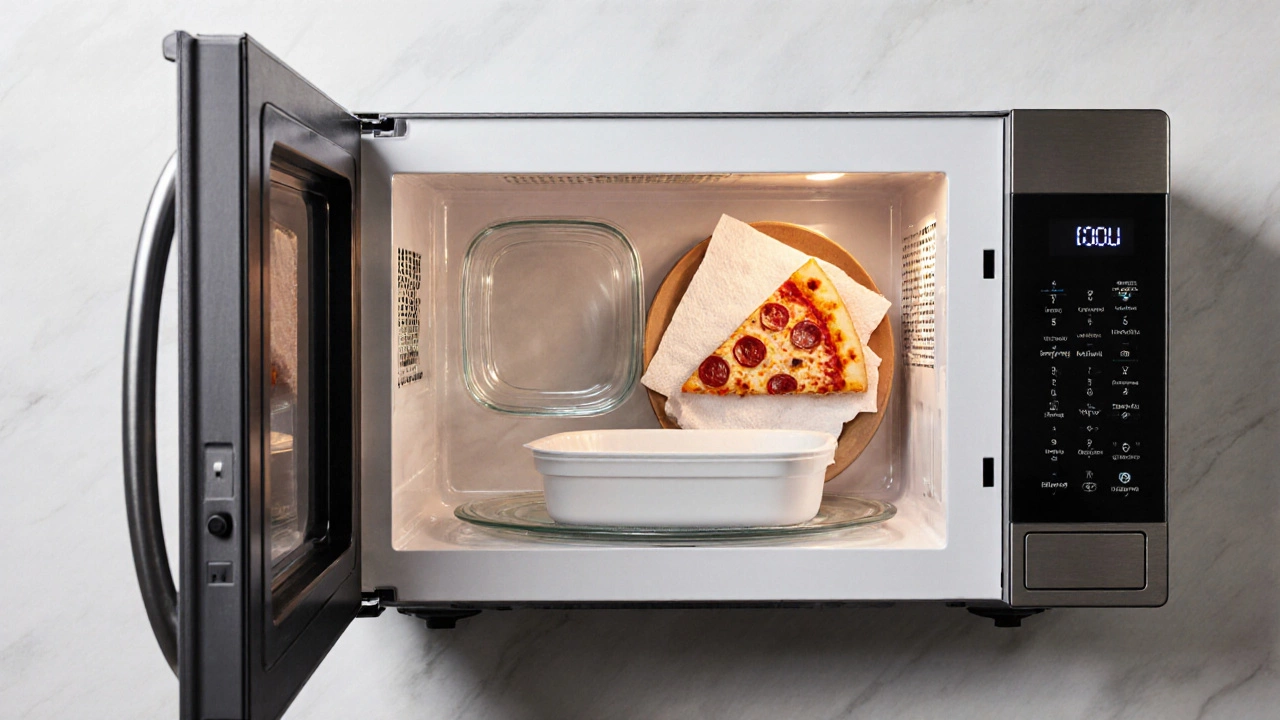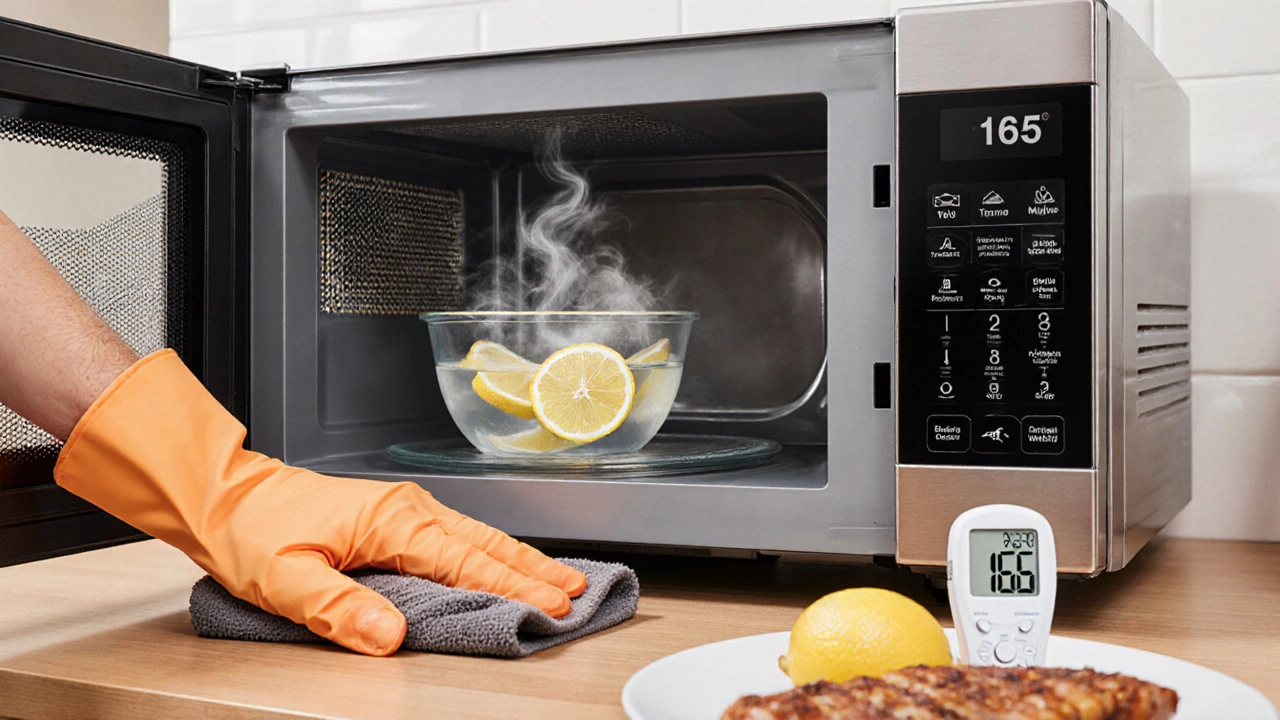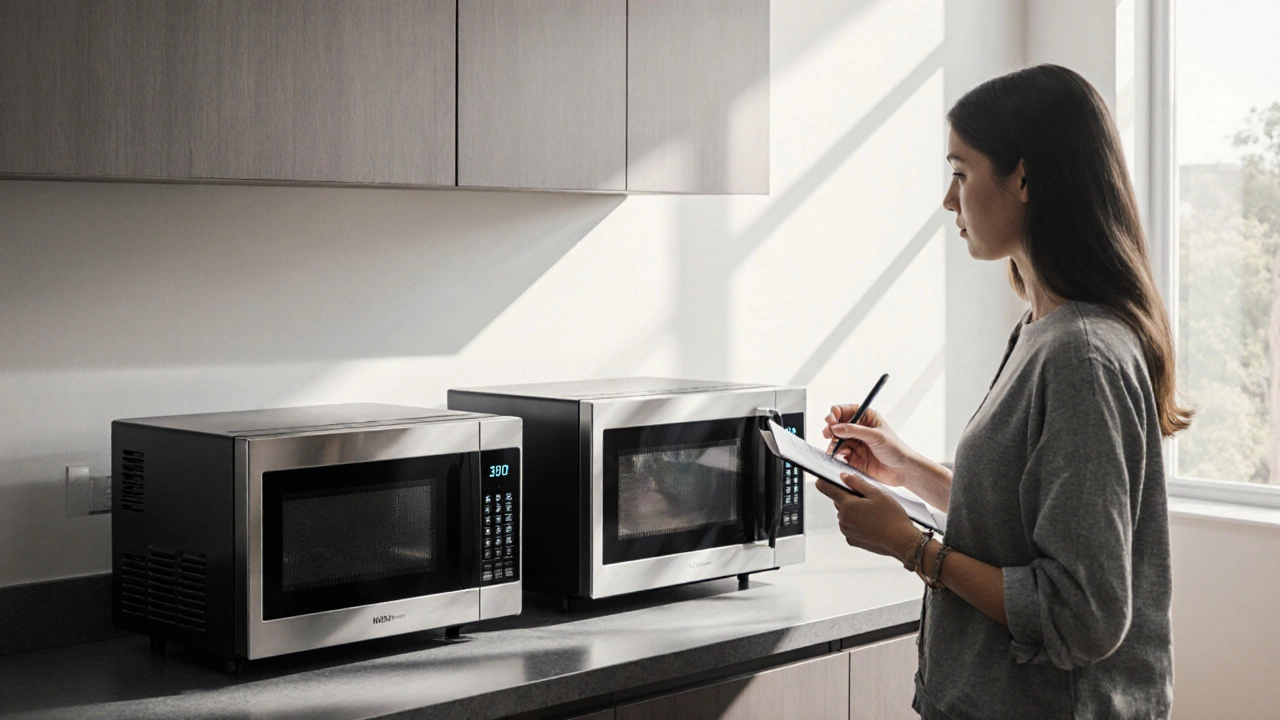Microwave Safety Checker
Check Your Microwave Safety
Answer the questions below to get instant feedback on your microwave practices.
Ever wonder why some meals turn out perfect while others end up soggy or overcooked? The secret often lies in how you use your microwave oven. Below is a no‑fluff guide that walks you through the everyday dos and don’ts, from picking the right unit to keeping it clean and safe.
Selecting the Right Microwave
Not all microwaves are created equal. A standard Microwave oven a kitchen appliance that uses electromagnetic waves to heat food quickly can handle reheating and basic cooking, but if you love baked dishes, a Convection microwave a hybrid device that combines microwave energy with a heating element and fan for crisping and browning might be worth the extra cost. Consider the following when shopping:
- Capacity: 0.7‑1.0 cu ft suits singles or couples; 1.2‑1.6 cu ft fits families.
- Power rating: 700‑900 W is typical; higher wattage shortens cooking time and reduces hot spots.
- Features: Turntable vs. flatbed, sensor cooking, child lock, defrost function.
Container Choices Matter
What you put inside the microwave influences safety and taste. Here’s a quick rundown:
- Stainless steel container metallic cookware that reflects microwave energy - Never use it inside the cavity; it sparks and can damage the appliance.
- Plastic container food‑grade plastic that tolerates microwave heat - Choose BPA‑free, microwave‑safe labels. Avoid thin or warped pieces that melt.
- Glass or ceramic dish non‑reactive cookware that evenly distributes heat - Great for reheating soups and casseroles; just watch for sudden temperature changes.
- Paper plates uncoated paper suitable for short‑term heating - Ideal for reheating pizza slices but avoid covering them with foil.
Always cover food with a microwave‑safe lid or vented paper towel; this traps steam, cooks more evenly, and prevents splatters.
Power Levels and Timing
Most microwaves let you adjust the power from 10% to 100%. Using the right level can mean the difference between a perfectly cooked dish and a dry, uneven mess.
- High (100%) for boiling water, steaming vegetables, or reheating pizza.
- Medium‑high (70‑80%) for cooking eggs, oatmeal, or delicate fish.
- Low (30‑50%) for defrosting, softening butter, or gently warming sauces.
When a recipe calls for “cook on high for 3 minutes,” start with the suggested time, then check the food and add 30‑second bursts if needed. Stirring or rotating midway prevents hot spots.

Cooking Tips to Avoid Common Pitfalls
Here are the top do’s and don’ts you’ll hear in every kitchen:
- Do arrange food in a single layer; overlapping pieces cook unevenly.
- Don’t microwave whole eggs in the shell-they can explode.
- Do use the Defrost function a preset low‑power mode that thaws food gradually for meat and poultry to keep the outer layer from cooking.
- Don’t place metal utensils, twist ties, or aluminum foil inside; they reflect microwaves and cause arcing.
- Do let food stand for 1‑2 minutes after heating; residual heat finishes the cooking process.
- Don’t overheat liquids; they can superheat and erupt when disturbed.
Cleaning and Maintenance
A clean microwave works better and lasts longer. Follow these steps weekly:
- Remove the Turntable the rotating glass plate that ensures even heating and wash it with warm, soapy water.
- Place a microwave‑safe bowl with equal parts water and lemon juice inside; run on high for 3‑5 minutes. The steam loosens splatters.
- Wipe the interior with a soft cloth; avoid abrasive pads that scratch the enamel.
- Check the door seal for cracks; a compromised seal can leak microwaves.
Never use harsh chemicals like bleach inside; a simple vinegar‑water solution does the job without leaving residues.
Safety Precautions
Microwaves use non‑ionizing radiation, which is safe as long as the unit is intact. Keep these safety habits in mind:
- Child lock: Engage it if your microwave has one; it prevents kids from starting it accidentally.
- Ventilation: Ensure the back of the unit isn’t blocked; proper airflow reduces overheating.
- Distance: Stand a few feet away while it runs; the exterior gets warm but isn’t hazardous.
- Food safety guidelines: Heat leftovers to at least 165 °F (74 °C) to kill bacteria. Use a food thermometer if unsure.
- Repair: If you notice unusual sounds, sparks, or a burning smell, unplug the microwave and have it serviced.

Convection vs. Standard Microwave: Quick Comparison
| Feature | Standard Microwave | Convection Microwave |
|---|---|---|
| Cooking Method | Microwave radiation only | Microwave + heated air fan |
| Best For | Reheating, simple steaming | Baking, crisping, roasting |
| Temperature Control | Power level (percent) | Exact °C/°F settings |
| Preheat Needed | No | Yes, like a traditional oven |
| Price Range (2025) | $80‑$200 | $200‑$500 |
Common Mistakes to Avoid
Even seasoned cooks slip up. Keep an eye out for these frequent errors:
- Using metal pans - sparks and damages the magnetron.
- Over‑cooking frozen meals - they become rubbery; follow package timing, then add 30‑second increments.
- Neglecting to stir - especially soups and sauces; stirring redistributes heat.
- Covering food with airtight plastic wrap - pressure builds up; use vented covers.
- Relying on the microwave to “cook” raw meat fully - always check internal temperature.
Frequently Asked Questions
Can I use any plastic container in the microwave?
Only containers labeled "microwave‑safe" or BPA‑free are safe. Thin take‑out containers can melt, and some plastics release chemicals when heated.
Why does my microwave make a humming noise?
A low hum is normal; it’s the magnetron operating. Loud buzzing or rattling may indicate a loose turntable or a failing component that needs service.
Is it safe to heat water in a glass mug?
Yes, as long as the mug is microwave‑safe glass. Avoid sudden temperature changes that could cause it to crack.
How can I prevent food from drying out?
Cover the dish with a vented lid or a damp paper towel, and use medium power settings. Adding a splash of liquid also helps retain moisture.
What does the child‑lock button do?
When activated, it disables the start button and keypad, preventing accidental operation by children.
By following these dos and don’ts, you’ll get the most out of your microwave, keep it safe for years, and enjoy faster, tastier meals every day.

